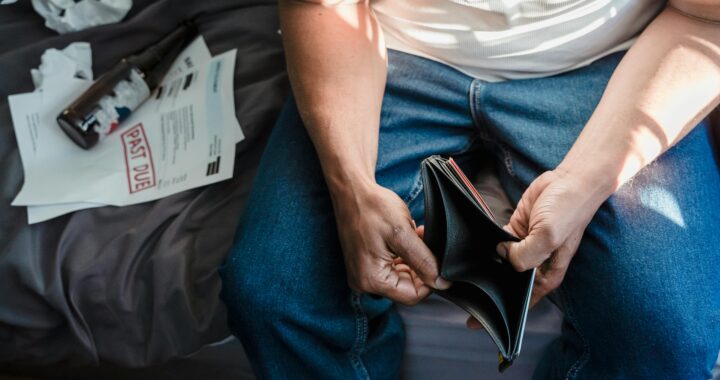There’s a certain hush that surrounds the word bankruptcy, a kind of whispered shame that tends to spread faster than the facts ever do. It’s no wonder. Between outdated assumptions, dramatic headlines, and well-meaning advice from friends who’ve never set foot in a Licensed Insolvency Trustee’s office, it’s easy to get caught in a fog of misinformation.
At Campbell Saunders, we hear it every day: “Will I lose everything?” “Will bankruptcy ruin my life?” “Is this the end of the road?” These questions are often voiced through clenched jaws, after months, sometimes years, of sleepless nights and slow-burning financial stress. And almost always, the truth is far less scary than what people have been led to believe.
So let’s clear the air. Let’s talk about bankruptcy myths, and the bankruptcy facts that actually matter.
Myth 1: Bankruptcy means you’ve failed.
Fact: Bankruptcy is a legal process, not a moral failing.
This is, perhaps, the most stubborn myth of all. Somewhere along the way, bankruptcy became a symbol of personal failure, a scarlet letter in a financial world obsessed with perfection. But the truth? Bankruptcy exists to protect individuals. It’s a tool built into the law to help Canadians recover, not collapse.
In reality, many people who file for bankruptcy have been hit by events beyond their control: job loss, illness, divorce, business downturns, or rising living costs. Choosing bankruptcy is about taking action.
Myth 2: You’ll lose everything if you file.
Fact: Most people keep the essentials, their home, vehicle, and RRSPs.
This fear is one of the most common barriers to getting help. But here’s the truth: Canadian bankruptcy law allows you to retain certain exempt assets. In most cases, you’ll still have a place to live, a car to get you there, and the personal items you need to function.
In fact, many people are surprised by what they’re able to keep. A Licensed Insolvency Trustee will walk you through exactly what’s protected, what’s at risk, and what options exist if you’d like to keep more than the basic exemptions, often, this is where a consumer proposal may be a better fit. Either way, you won’t be navigating it blind.
Myth 3: Bankruptcy erases all your debts.
Fact: Not all debts are dischargeable, but most unsecured debts are.
There’s a common belief that bankruptcy wipes the slate completely clean, no exceptions. The reality? It depends on the type of debt. Bankruptcy can eliminate most unsecured debts: credit cards, payday loans, utility arrears, personal lines of credit, and most CRA debt, to name a few.
However, there are exceptions. Certain obligations, like child support, alimony, court fines, and student loans (if less than 7 years old), typically remain even after discharge. This is why it’s so important to get personalized advice before filing. Bankruptcy isn’t a one-size-fits-all fix, but it can offer life-changing relief for the right situation.
If you’d like to understand how discharge works in more detail, check out our article “Bankruptcy Discharges”.
Myth 4: Your credit will be ruined forever.
Fact: Bankruptcy impacts your credit, but it’s temporary, and you can rebuild.
Yes, bankruptcy appears on your credit report (usually as an R9 rating), and yes, it sticks around for several years (typically 6–7 after discharge for a first bankruptcy). But here’s what’s missing from that headline: your credit was likely already struggling if you’re in a position to consider bankruptcy.
The real damage isn’t from filing, it’s from months or years of missed payments, mounting interest, and maxed-out cards. Bankruptcy draws a line in the sand. It allows you to stop the bleeding, regain control, and begin again. And the moment it’s discharged? You’re free to start rebuilding. Secured credit cards, savings plans, and on-time payments can help you write a new chapter, often faster than you think.
Myth 5: You’ll never qualify for credit again.
Fact: Many people receive new credit offers within months of discharge.
It sounds counterintuitive, but lenders know that a person emerging from bankruptcy is often less of a risk than someone juggling unaffordable debt. With old debts gone and income freed up, you become a more stable borrower.
Of course, you won’t walk out of bankruptcy with a perfect credit score or a stack of approvals, but you can qualify for basic credit products. Many people start with a secured credit card, then gradually rebuild from there. Over time, with consistency and care, major loans (like car financing or even a mortgage) can become possible again.
To learn how money mindset and habits support recovery after debt relief, explore our related piece “I have no money! How to Manage Financial Stress”.
Myth 6: Bankruptcy is your only option.
Fact: Bankruptcy is just one of several legal debt solutions.
Bankruptcy isn’t a door slammed shut, it’s one door among many. At Campbell Saunders, we explore all options first: consumer proposals, informal arrangements, budgeting strategies, even debt consolidation (if the circumstances allow).
Bankruptcy is only recommended when it truly makes the most sense for your financial and personal situation. And sometimes, it doesn’t. The key is talking to someone who won’t push you into a pre-set path, but instead will listen, explain, and help you weigh your choices without judgment.
Bringing It All Together
Bankruptcy myths thrive in silence, in the gaps where people feel too ashamed to ask, too afraid to find out, or too overwhelmed to explore their options. But facts? Facts are empowering. They’re what allow you to move from fear to clarity, from confusion to a plan.
If you’re facing debt and wondering whether bankruptcy might be part of your solution, don’t navigate it alone. The Licensed Insolvency Trustees at Campbell Saunders are here to guide you, with honesty, empathy, and a proven commitment to helping British Columbians find real relief.
Ready to get the facts, and get your life back?
